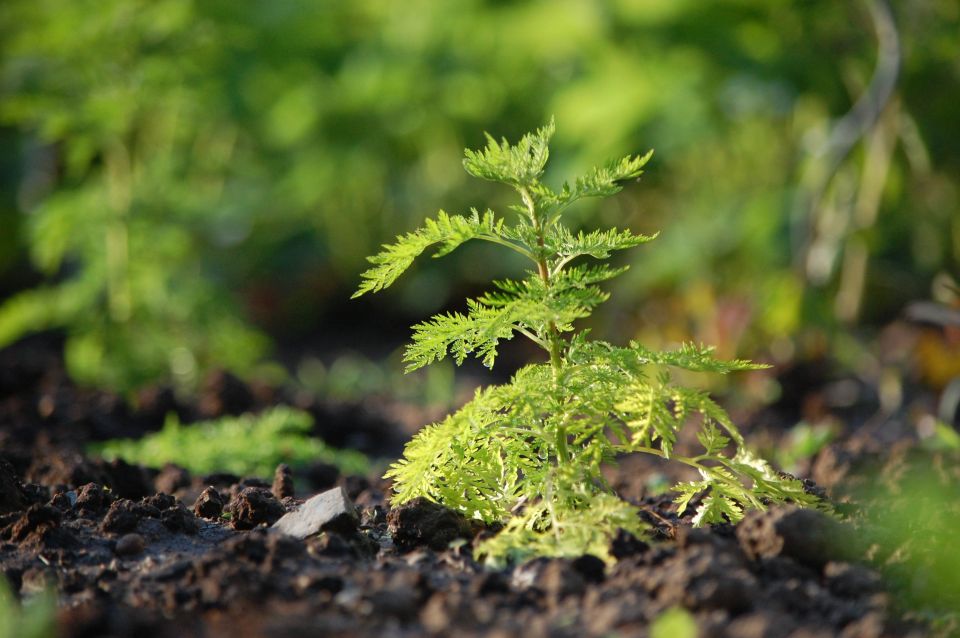
Many people, especially on the African continent, still suffer from the dangerous tropical disease malaria. Artemisia annua is a herb against this disease, but it is not recognized as a cure by the WHO. It could also be used to combat viral diseases, such as COVID-19, successfully and at low cost!
The example of Madagascar
On the subject of COVID-19, the president of the East African island republic of Madagascar recently declared that he trusted in God and in the medicinal plants “that the Lord has given to help our country and other countries in the world against this disease.” By medicinal plants is meant, among others, the plant Artemisia annua, which has been planted in Madagascar’s magnificent flora for decades and has been used very successfully against malaria. Artemisia annua is now also said to help against the coronavirus: the Madagascan Institute for Applied Research has developed a remedy based on the plant.
Artemisia known for thousands of years
The island state is not really taken seriously by the western world and also by the WHO – on the contrary. One rather makes fun of it or addresses the concern that these natural remedies could perhaps be of no use or even have side effects! It is too little researched, one does not know the effect with COVID-19 yet. But let’s be honest! What about the vaccine that many in this country have high hopes for? How much do we know about it? Could it possibly also have side effects? In contrast, Artemisia annua has been known in traditional Chinese medicine for thousands of years. Meanwhile, its efficacy, especially for malaria, but also for other diseases, has been proven in numerous studies. In contrast to the expensive malaria drugs of the pharmaceutical industry, Artemisia also comes without side effects and is much cheaper!
What is Malaria?
Malaria is the most common tropical disease, affecting about 220 million people a year and killing more than 440,000 people (as of 2017). By far the most affected areas are in sub-Saharan Africa to the north of South Africa (about 90%!). There are also areas in Asia and South America affected by malaria. Malaria is caused by tiny single-celled parasites called plasmodia, which are transmitted by the bite of the Anopheles mosquito. There are different types of malaria, the most dangerous form is malaria tropica, which is caused by Plasmodium falciparum. Symptoms are headache and pain in the limbs, sometimes also diarrhea and nausea. Very typical are high fevers with episodes of fever alternating with fever-free intervals (alternating fevers). If left untreated, malaria can cause anemia and severe organ damage. About ten percent of those infected without treatment die, especially children. In certain areas, one in five affected children dies! Artemisia annua could put an end to this dreaded tropical disease! The plant also grows very well in the tropics, as the example of Madagascar shows. A broad treatment of malaria would be possible if people were informed about Artemisia and instructed in its correct cultivation and use. But the WHO torpedoes the use of Artemisia and instead propagates pharmaceutical alternatives, which most Africans cannot afford and which may even cause serious side effects!
Studies prove effectiveness
Opponents of Artemisia claim that the active ingredient content in traditional Artemisia products is not standardized and the effect is not proven. The distribution of Artemisia therefore poses a risk to the population. Meanwhile, however, there are good, serious studies that prove the opposite. Very clear results are shown by this double-blind, randomized study with 957 malaria patients[i]: One half of the subjects took Artemisia tea and a placebo pill. The other half took a placebo tea and an ACT drug, as recommended by the WHO for malaria. Clinical symptoms did improve in both groups. Fever disappeared after 24 hours in the Artemisia group and after 48 hours in the ACT group. In the Artemisia group, malaria trophozoites were no longer detectable after 24 hours. In the ACT group, it took up to 14 days to reach this status. In children, 91% of Artemisia patients had no more pathogens in their blood after 28 days, compared with only 50% of the ACT group. In adults, 100% of the cases in the Artemisia group were cured (no more pathogens in the blood), while in the ACT group it was only 30%. What is also worth mentioning is that the Artemisia tea caused side effects in only 5% of the cases, as opposed to 42.8% with the ACT drugs. These are incredible, absolutely valid results that clearly speak in favor of Artemisia.
Artemisia against viruses
Many mechanisms of action of Artemisia are not yet known, but at least one is, and it is quite remarkable! Artemisa annua contains a chemically stable peroxide (which, by the way, does not exist according to basic chemical rules, but does in God’s creation). Plasmodia and bacteria (and also cancer cells) contain many times more iron ions than other cells. If the peroxide now comes into contact with the iron, it breaks down into two aggressive free radicals, which damage the affected cells and cause them to die!
Artemisia fights not only malaria, but also many viral diseases. According to first field reports and application studies, this is also true for COVID-19. Artemisia works very well against colds, but also against the flu (influenza) and even against AIDS! However, viruses do not contain iron. Therefore, it cannot be due to the mechanism of action described above that Artemisia helps against viruses. The exact mechanism is unknown, but is probably related to the fact that Artemisia increases the number of natural killer cells (NK cells), a special type of white blood cells.
And the winner is..
The Nobel Prize is one of the highest honors in science and an honor for any researcher. In 2015, the Nobel Prize in Medicine went to – Artemisia! At least indirectly… The prize was awarded to 84-year-old Chinese Youyou Tu for her discovery of the active ingredient artemisinin in the medicinal plant Artemisia annua. When drugs commonly used at the time lost their effectiveness against malaria at the end of the 1960s because the malaria pathogen was becoming increasingly resistant, Ms. Tu turned to traditional Chinese medicine. She came across Artemisia annua and extracted the active ingredient artemisinin from it.
However, the plant itself deserved the Nobel Prize at least as much. As the above-mentioned study clearly shows, the whole plant is much more effective than its active ingredient artemisinin alone. Unlike artemisinin drugs, much less resistance occurs when the whole plant is administered.
Clear words
So why is Artemisia being withheld from the people of Africa, who continue to suffer severely from malaria? Why is the WHO preventing the use of Artemisia? Could it be that profit comes before the interest of public health? Former WHO employee German Velasquez doesn’t mince words when he says: “Twenty-five years ago, WHO was over 50% publicly funded. Today, it’s down to about 20%. The private sector has taken control of WHO. In the first 50 years of its history, the pharmaceutical industry developed drugs to cure diseases. Today, drugs are developed to treat diseases, but not to cure them. Profit comes before the interest of public health.” Can WHO decide objectively when it is 80% paid by the pharmaceutical industry?!
The business of malaria: big pharma vs. natural medicine
The French TV channel France24 has produced an excellent film about Artemisia, the fight against malaria and the financial interests involved. The 2017 English-language film shows how Artemisia has traditionally been used against malaria, how the WHO torpedoes its use while promoting pharmaceutical alternatives with serious side effects.
Link to the film: https://www.youtube.com/watch?v=OvC4uSYprU8
[i] Muyangi et al. (2019): Artemisia Annua and Artemisia Afra Tea Infusions vs. Artesunate-Amodiaquine (ASAQ) in Treating Plasmodium Falciparum Malaria in a Large Scale, Double Blind, Randomized Clinical Trial. In Phytomedicine (57), pp. 49-56(https://pubmed.ncbi.nlm.nih.gov/30668322/).
